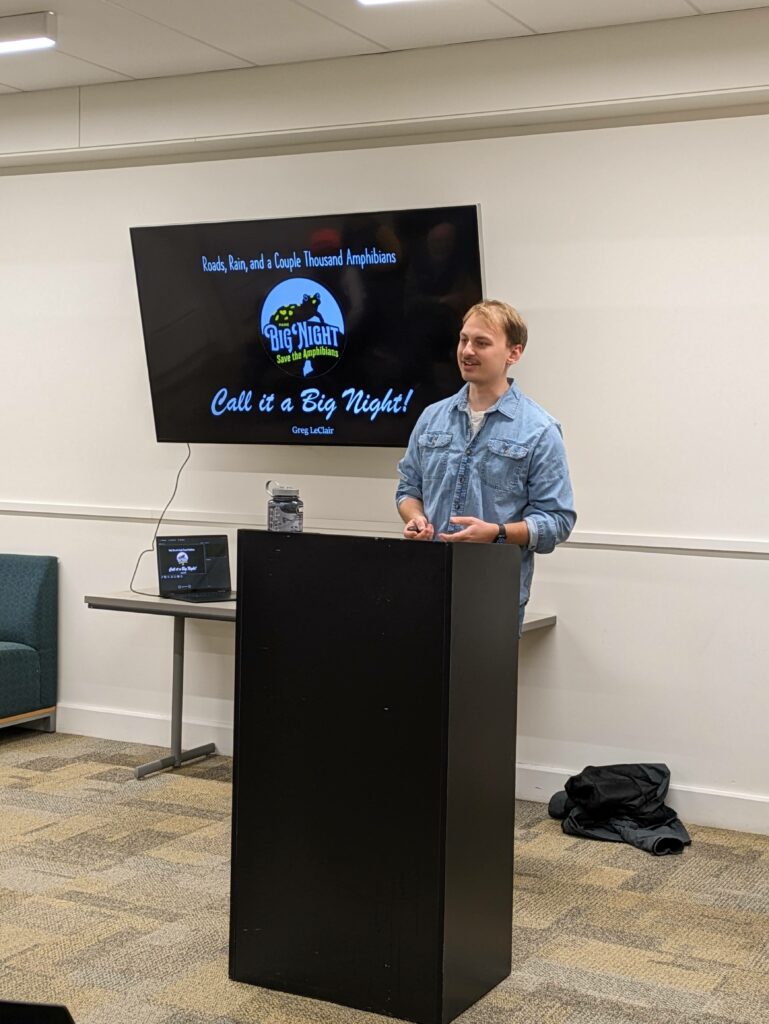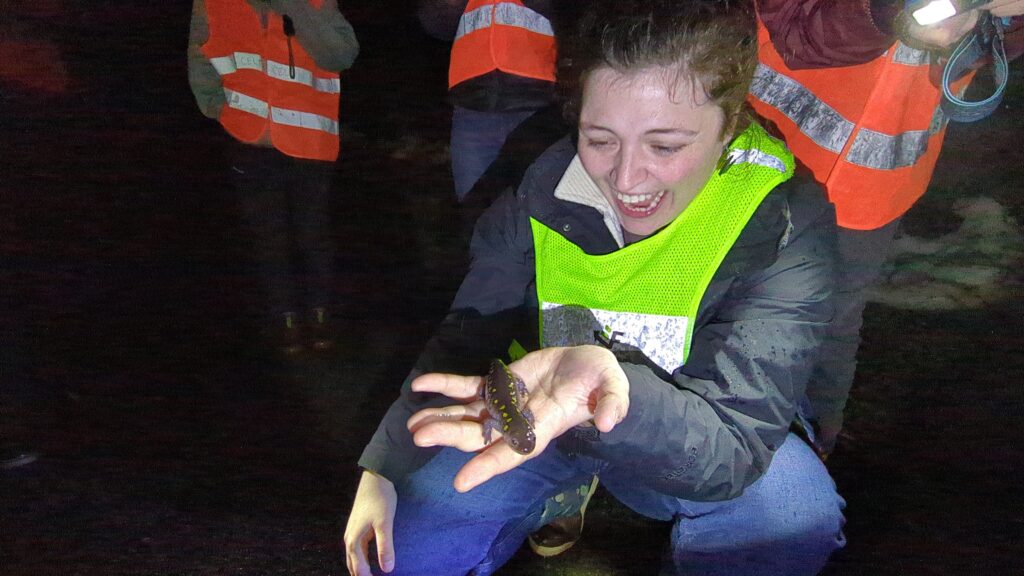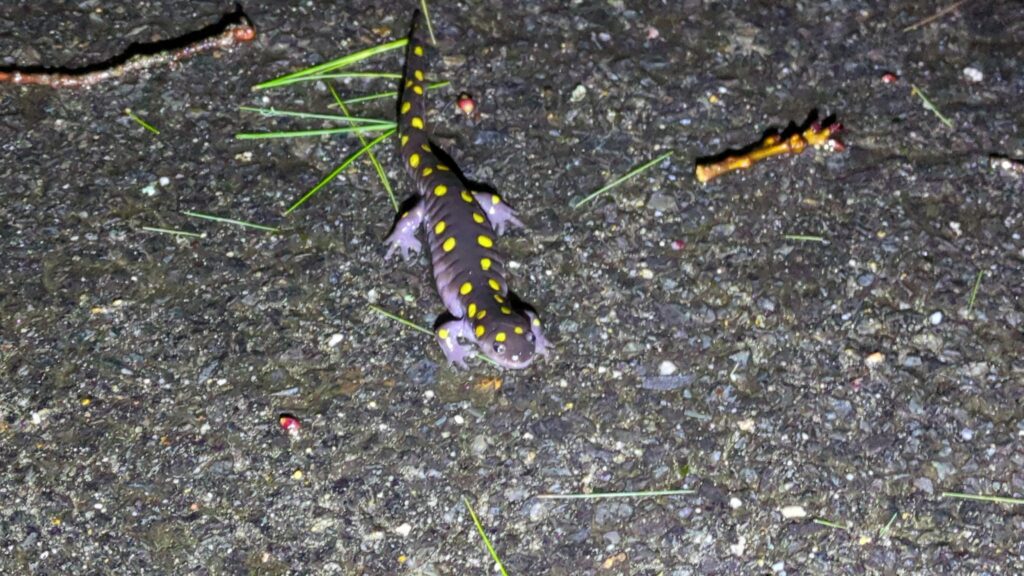On March 28th, CELT and the Thomas Memorial Library welcomed Greg LeClair for a program about Maine Big Night, a community science initiative educating people about Maine’s native frogs and salamanders as they move to their spring breeding habitat.

Big Night occurs on the first warm and rainy spring night, and can be hard to predict ahead of time due to its reliance on the weather. As luck would have it, the first Big Night of this year for our area happened on the same night that LeClair, Executive Director and founder of Maine Big Night (MBN), a 501(c)3 nonprofit focused specifically on the conservation of wood frogs, spotted salamanders, and other amphibians critical to Maine’s ecosystems, was speaking at the library.
After the conclusion of LeClair’s talk, CELT’s resident amphibian expert and Education Program Coordinator Ali Gustavson led a group of explorers to see the migration in action.


Amphibians – and thus Big Night – play a major role in our ecosystems but sadly are among the most vulnerable of species as well. Urban development has been tough for amphibians and Big Night. The development of roads often cuts through the paths of amphibious migration and has led to many of the animals getting killed. In recent years many groups like MBN have come together to help this vulnerable population by creating tunnels under roadways for safe passage and organizing citizens to keep watch through the night and help these critters get safely across the road.
Though Big Nights are likely over for the year, this micro-migration happens every year when the ground has thawed. If you would like to be notified about future CELT field walks, sign up here!
To learn more about Maine Big Night and to volunteer to collect data, visit the MBN website.
